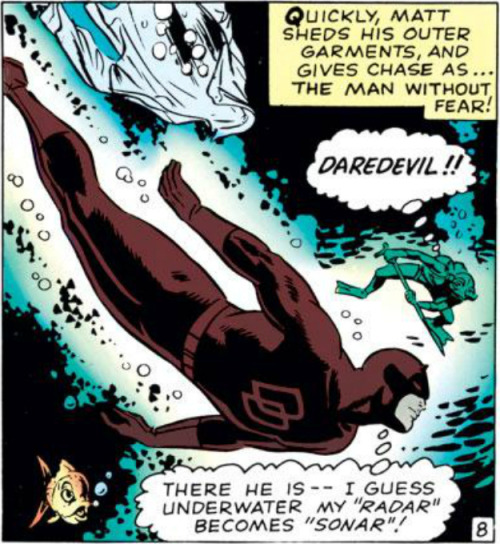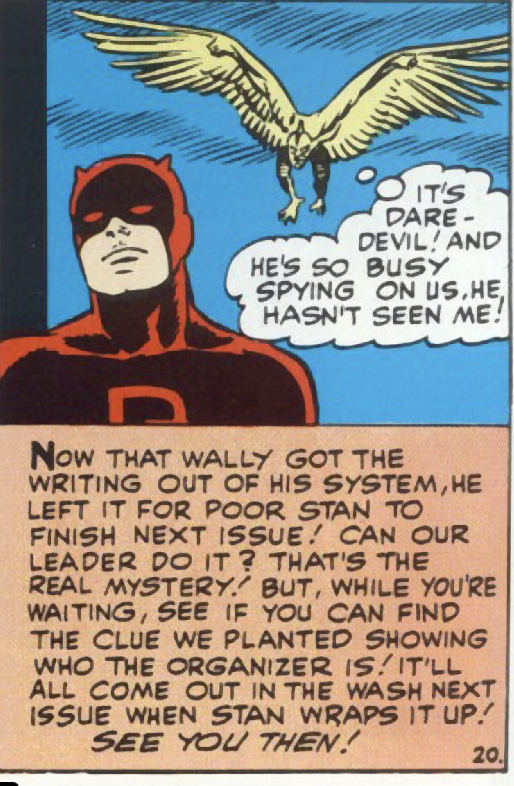
The first time I read these issues I thought, “Damn this would have been awesome if it were written by Steve Gerber!” I mean, can you imagine, if Marvel’s master of the weird teamed up with Wally Wood? That would have been awesome.

This was, as I understand it, the first time Wally Wood had written a comic. Or at least the first time he got credit for it. I believe he claimed to have already been writing the scripts for Daredevil, but Stan Lee said otherwise. Given that the Marvel method was to provide an artist with a plot and then script whatever the artist drew, it’s pretty easy to see this as an honest difference of opinion. Stan was accused of this over and over, however, and generally where there’s smoke there’s fire. In the end, I suspect the truth is somewhere in the middle. That’s where one usually finds the truth.
A guy named The Organizer breaks a criminal named Monk out of prison, using his agent Cat-Man to do the job.

He assembles a four-person crew…

And then gives them animal costumes and imaginative monikers: Ape Man! Cat Man! Bird Man! Frog Man!

The Ani-Men!

That’s their base.

The Ani-Men fight and frame Daredevil .

When he fights Frog-Man, we see a novel interpretation of his powers. Underwater, they work as sonar!
At the end of issue #11, he’s on the run.

Is it just me, or does Stan seem like kind of a dick in that panel, above? Again, this was Wally’s first official script, and Stan used the power of his position to be a bit of a bully. Not a good look.
When it’s all resolved at the end of #12, Stan makes it clear that Wally Wood is done.

We get a final box promising a new art team (which is too bad, because Bob Powell and Wally Wood were doing a fantastic job).
It’s interesting how much Stan Lee’s hype emphasized creators, because I’m pretty sure the other major comics publishers at the time weren’t doing this kind of thing. It’s sad when that power to elevate colorists and letterers etc. is used instead to tell the Bullpen to basically stay in their own lanes. And that’s why Wally left. It was because he couldn’t STANd (get it?) it at Marvel.
He got a writer credit for #11, which is a very rare case for Marvel in 1965—as Stan wrote everything—but that was it for him and Marvel.
Seriously, though, the history of the credits over these issues are very interesting…Start here in issue #5.
Then Stan Lee feels compelled to allow Wood a writer’s credit in #10.
And by #11, Stan was taking the reins again.
Then, with #12, they were introducing John Romita.
Romita turned out to be one of the most important artists of the decade, but that’s kind of not the point. Wood was arguably one of the most important artists of the decade, too–even if he’s nowhere near as well known.




